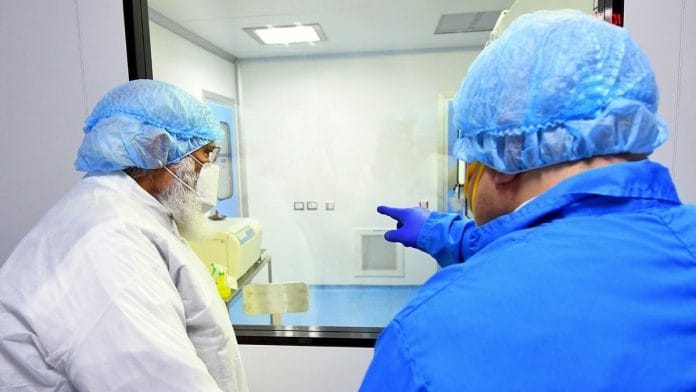New Delhi: Ahmedabad-based pharmaceutical company Zydus Cadila is likely to apply for emergency use of its Covid-19 vaccine, ZyCoV-D, by the end of this month.
Zydus is expecting approval for the country’s second indigenously-developed vaccine against the novel coronavirus — after Bharat Biotech’s Covaxin — by June.
If all goes as expected, ZyCoV-D will be the fourth approved Covid vaccine in the country after Covaxin, Serum Institute of India’s Covishield and Russia’s Sputnik V.
Here’s a look at how ZyCoV-D works and how it is different from other vaccines.
How ZyCoV-D works
According to Geneva-based Vaccine Alliance (GAVI), there are four categories of vaccines in clinical trials against Covid-19: virus, protein subunit, viral vector, and nucleic acid (RNA and DNA).
“Some of them try to smuggle the antigen into the body, others use the body’s own cells to make the viral antigen,” the GAVI website says.
ZyCov-D is a “plasmid DNA” vaccine that falls under the category of ‘nucleic acid’ vaccines.
The vaccine uses genetically engineered plasmids, which are a type of DNA molecule that exist outside of the cell. The molecule is coded with an antigen, that are substances that instruct the body to generate antibodies.
Zydus has established a DNA vaccine platform that uses a non-replicating plasmid, which carries the “gene of interest”. It means that the DNA sequence inserted will match the sequence pattern of the virus, pushing the body to build antibodies against it.
The platform can be manufactured easily as it requires minimal biosafety requirements (BSL-1) unlike attenuated vaccines which require the top BSL-3 or BSL-4 units.
The platform is also known to have lower cold chain requirements, which will make it easier to distribute the vaccine in hinterlands.
Moreover, the platform can be easily modified if the virus mutates.
Also read: Virus variant in India can infect those vaccinated, but unlikely to cause severe Covid: Study
How ZyCoV-D is different from other vaccines in India
Hyderabad-based Bharat Biotech’s Covaxin is an “inactivated” vaccine that falls under the category of “whole virus” whereas SII’s Covishield and Russia’s Sputnik V are based on a “viral-vector” platform.
SII’s other vaccine candidate, Novavax, is based on the “protein subunit” vaccine.
Pune-based Gennova Biopharmaceuticals, and American drug and vaccine majors Pfizer and Moderna are developing or manufacturing mRNA platform vaccines — which fall under the “nucleic acid” category. However, these vaccines are not yet available in India.
How other vaccines work
Covaxin works on an “inactivated” virus platform. It is manufactured by using particles of SARS-CoV-2, which have been killed to exclude its ability to infect vaccinated people or replicate in them. These particles are identified by the body, leading it to produce antibodies and build immunity against the dead virus.
Viral vector vaccines — Covishield and Sputnik V — work by placing a coronavirus antigen inside an inactivated virus that is different from the coronavirus. Once the antigen is exposed, the body stars producing antibodies against it.
Adenovirus is a commonly used vector, which causes the common cold. Sputnik and Covishield both use the adenovirus platform.
Viral vector vaccines, according to GAVI, can mimic natural viral infection and should therefore trigger a strong immune response. “However, since there is a chance that many people may have already been exposed to the viruses being used as vectors, some may be immune to it, making the vaccine less effective,” it said.
Nucleic acid vaccines, both RNA and DNA, work by giving cells genetic instructions to produce antigens. These vaccines don’t contain the actual antigens but use the body’s own cells to produce them.
(Edited by Amit Upadhyaya)
Also read: 51 nations’ nod shows Sputnik transparency, Russian researchers reply to doubts raised in Lancet






